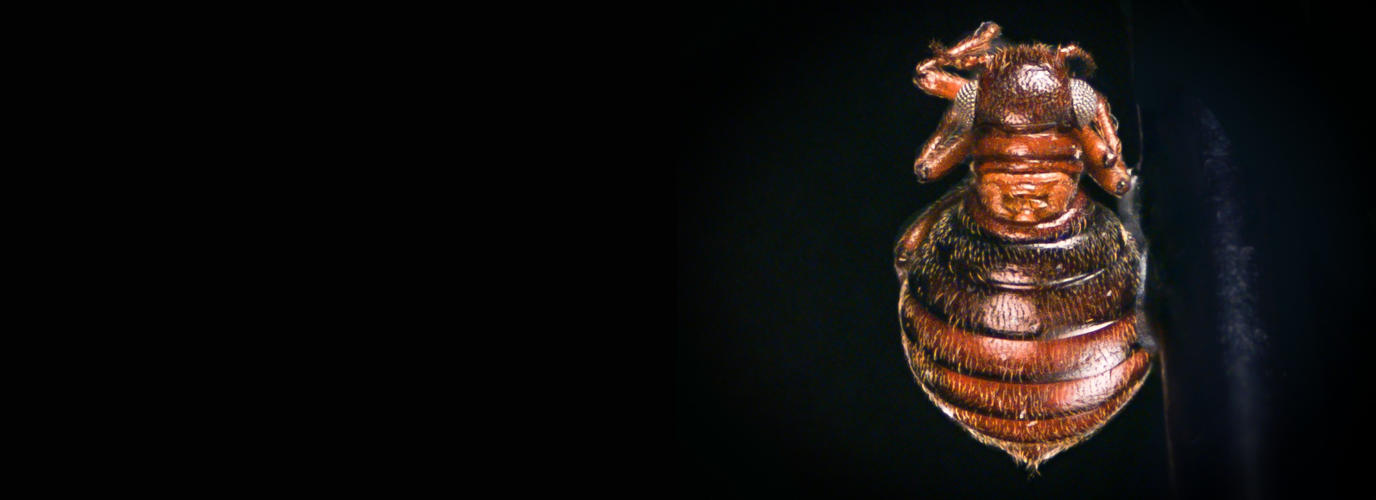What Is That?!
Strange new insect discovered in Canada.

Peering into her microscope, entomologist Crystal Ernst was downright puzzled. She was meticulously sifting through and identifying the tens of thousands of insects collected last summer on the Central Coast of British Columbia. Next up under the microscope was a shiny, pinhead-sized creature. She’d never seen anything like it. Turns out, neither had anyone else in Canada.
“I couldn’t figure it out. It’s such a bizarre looking insect,” says Ernst, a Hakai post-doctoral researcher at Simon Fraser University.
She continued to search the literature for clues of where this mystery insect fits on the evolutionary tree. Its globular body looks like an over-inflated flea. No wings. Silver golf ball eyes.
Knowing where to start your detective work is the hardest part. You search all the wrong neighborhoods for a suspect. You find one that looks close. An almost perfect doppelgänger. Then some characteristic doesn’t quite fit. Another dead end.
Luckily for Ernst, there’s a whole community of insect detectives interested in a good mystery. She reached out to fellow entomologists on Twitter with a picture and a plea. Within hours, Ernst got an unexpected answer.
“Snow scorpionfly was not even on my radar,” she says. “Unless you know it, you would be unlikely to key it out. If you google [snow] scorpionfly, usually they have long, stretched out ‘snouts,’ back legs designed for hopping, and elongated bodies. But this group looks nothing like that.”

Sometimes called an “evolutionary relic,” this strange subgroup of snow scorpionflies, a distant relative of fleas, has been around since the late Jurassic. This particular genus, Caurinus, has only two known species—one from Oregon and one, described in 2013, from southeast Alaska. Where Ernst collected her specimen on the British Columbia Central Coast lies almost exactly halfway between.
“It [stood] to reason that there would be this kind of snow scorpionfly somewhere in the middle, but they had never been seen in Canada before,” says Ernst.
There’s a palpable excitement in her voice. It’s not often you find a species that has not been previously recorded in the entire country.
The strangeness of this new insect goes beyond its looks. Most scorpionflies are carnivores, but based on its Oregonian cousin, this tiny new insect is likely a vegetarian that eats simple plants like liverworts and mosses. Equally odd, snow scorpionflies, like their common name suggests, are thought to be most active in winter. Both Ernst’s specimen and the one from Alaska were found in the summertime.
More detective work will be needed before we know if the British Columbia specimen is a new species to science. With just one lone female specimen, you can’t fully describe a species. So Ernst and her colleagues will be on the lookout for more of these enigmatic insects in next year’s collections.
“It’s such an exciting find. These insects are really total weirdos.”

For more about these insect oddballs, check out Jennifer Frazer’s article on the 2013 discovery of the Alaskan species in Scientific American, as well as a video of one hopping.
Thanks to Thomas Shahan and Josh Vlach for suggesting that the insect may be a snow scorpionfly.

